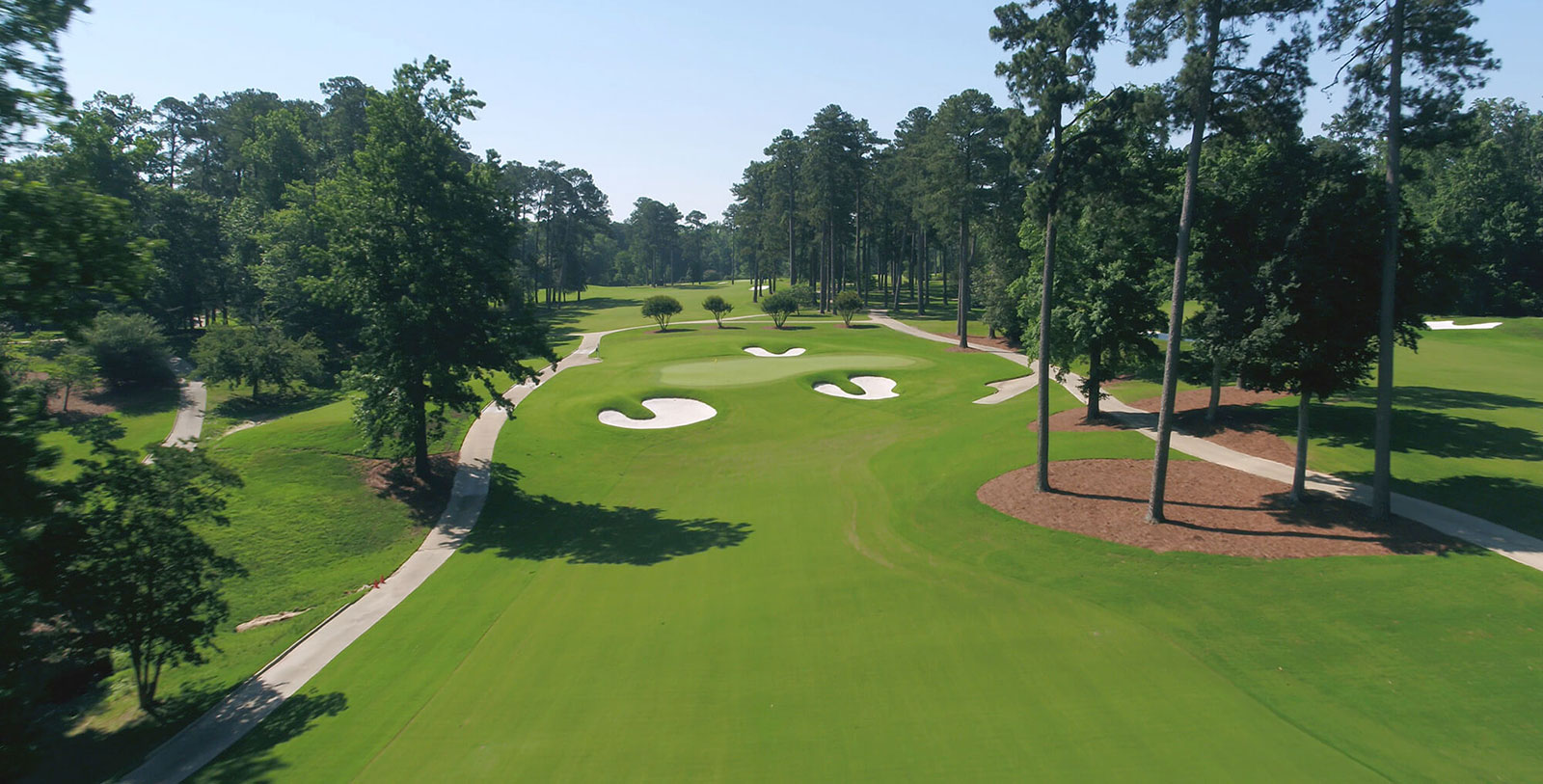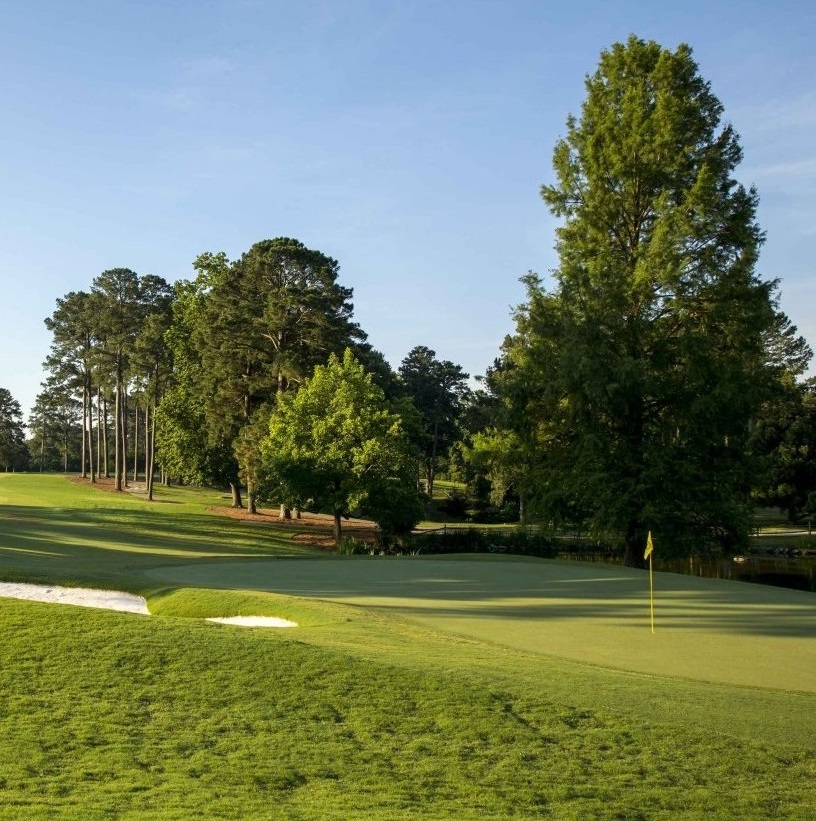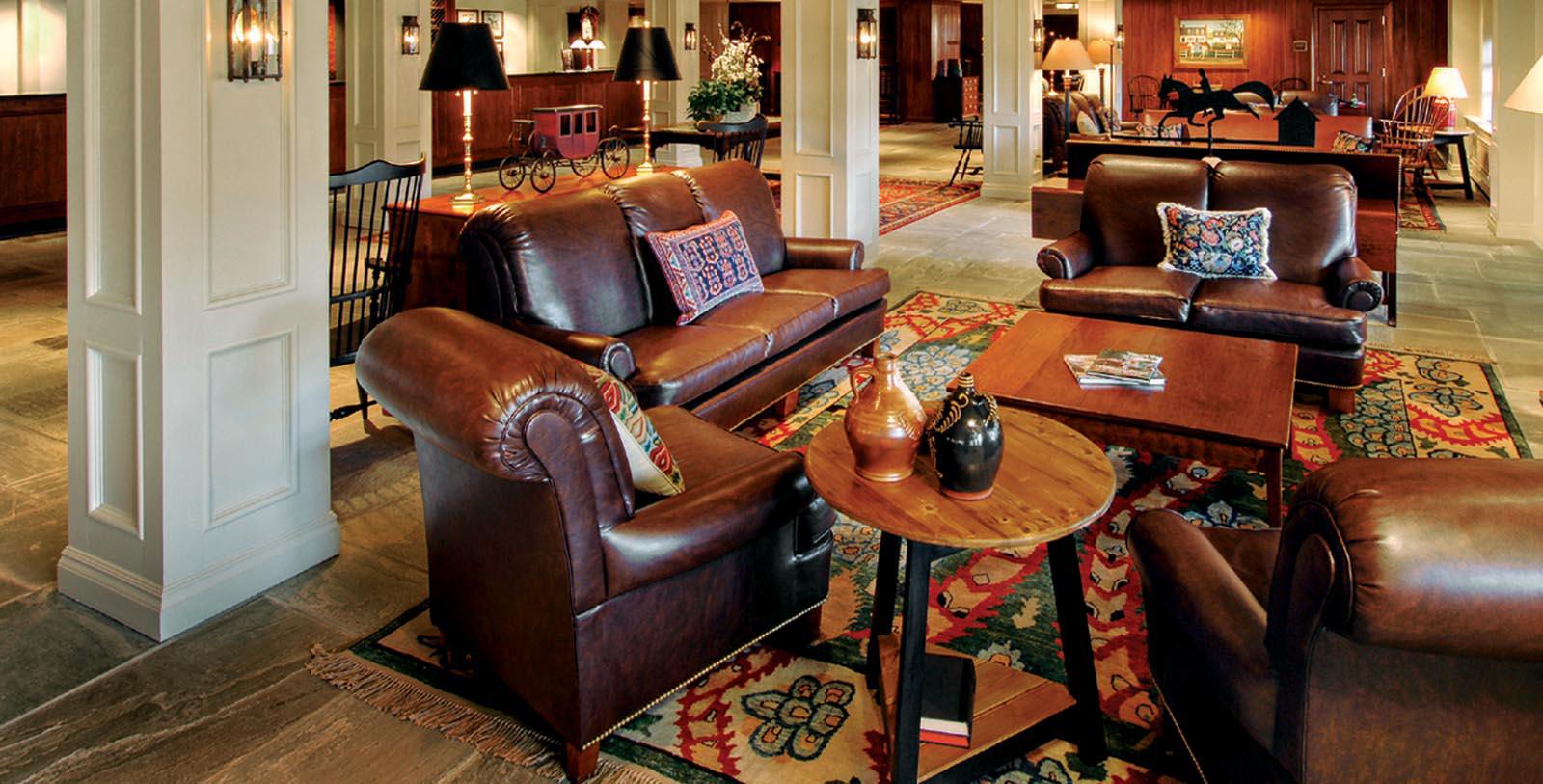Receive for Free - Discover & Explore eNewsletter monthly with advance notice of special offers, packages, and insider savings from 10% - 30% off Best Available Rates at selected hotels.
williamsburg golf courses
Discover Colonial Williamsburg’s historic Golden Horseshoe Golf Club and its three courses: the Gold Course, the Green Course, and the Spotswood Course.
Williamsburg Lodge, Autograph Collection, and Colonial Houses’ golf heritage dates back to the 1947.
VIEW TIMELINEColonial Williamsburg's Golden Horseshoe Golf Club
Hear the story behind one of the "Top 100 Resort Courses in America," Colonial Williamsburg's Golden Horseshoe Golf Club.”
WATCH NOWGuests at any Colonial Williamsburg hotel in Williamsburg, Virginia, are invited to play golf at the Golden Horseshoe Golf Club. The club itself has 45 brilliant fairways spread across three unique golf courses: the Gold Course, the Green Course, and the Spotswood Course. All feature a stunning array of quiet hills, tranquil creeks, and turquoise ponds. The game of golf at Colonial Williamsburg Resorts dates to at least 1947, when a nine-hole course debuted for guests staying at the historic Williamsburg Inn. Then in 1963, renowned golf course architect Robert Trent Jones Sr. updated the venue, creating the Spotswood Course (also with nine holes). But Jones continued working throughout the resort, adding another 18-hole course that he christened as the “Gold Course.” (Around the same time, Jones had also designed spectacular golf courses for Laurance S. Rockefeller at his resorts in Vermont and Hawaii.) His son, golf course architect Rees Jones, eventually followed in his father’s footsteps to Williamsburg several decades later. The younger Jones drew inspiration from the iconic Gold Course to create the acclaimed Green Course in 1991. Carved from the same beautiful parkland terrain, the Green Course was longer than the Gold, but also more forgiving. The Gold Course’s layout thus created an entertaining challenge for golfers of every skill level. Jones subsequently directed the renovation of his father's Gold Course, which re-opened in July 2017. For instance, tees have been re-leveled, resurfaced, and reimagined, while the putting green has been expanded upon considerably. The club’s range now also grants golfers plenty of opportunity to work on their long and short games. Both the Gold and Green courses have since hosted minor USGA Men’s and Women’s championships, too, with the Gold Course even serving as the site of the NCAA Division I Men’s Golf Championship in 2007. Truly few other places in Virginia are better for a round of golf than the Golden Horseshoe Golf Club. Indeed, the club has earned accolades, such as Golf Magazine’s “Top 500 Golf Holes in the World,” and Golfweek’s “Top 100 Resort Courses in America.”
-
About the Location +
Williamsburg itself was first settled as a fortified town called “Middle Plantation” in 1632, following a brief war with the local Powhatan a decade prior. The town specifically governed over a series of palisades that served to protect Jamestown, Virginia’s main administrative center at the time. Nevertheless, Middle Plantation experienced newfound importance amid Bacon’s Rebellion in 1676. That year, Nathaniel Bacon and a large group of disgruntled Virginia colonists openly defied the colonial governor, William Berkeley, due to his policies with the Native Americans. They soon fought their way south toward Jamestown, eventually burning the whole city to the ground. Berkeley and the rest of the colonial government fled to Middle Plantation, where they set up a temporary headquarters for the remainder of the uprising. Once Berkeley had finally put a stop to Bacon’s Rebellion, however, he quickly realized that Middle Plantation provided a much safer—and all around nicer—location. As such, the colonial government permanently relocated to the town, which they renamed “Williamsburg” after the reigning monarch of England, William III.
Williamsburg became the most important settlement in Virginia for the next several decades, emerging as the main cultural center within the entire colony. One of the biggest forces behind this development was the newly created College of William & Mary. Colonists had attempted to create such a facility for years, with the first undertaking happening in the 1620s. After many failed attempts, the colonists tried one more time in Williamsburg during the 1690s. They hired Reverend James Blair to spearhead the effort, who successfully obtained a royal charter in London. Work on the new school began shortly after Blair’s return to Virginia in 1693, christening it as the “College of William & Mary” in honor the king and his wife, Queen Mary II. The college officially opened just a year later, offering classes inside the forerunner to the iconic Wren Building. Soon enough, the College of William & Mary developed an esteemed reputation for the quality of its education, prompting Virginia’s wealthiest families to send their children to study on-site. In fact, many of the nation’s Founding Fathers enrolled at the school, including future U.S. Presidents George Washington, Thomas Jefferson, and James Monroe.
Like Jamestown before it, Williamsburg ultimately lost its status as Virginia’s capital. During the American Revolution, Thomas Jefferson—then serving as Governor of Virginia—decided to move the capital 50 miles inland to Richmond. He feared that Williamsburg’s location near the James and York rivers made it incredibly vulnerable to a British attack. But Williamsburg managed to survive the loss of its political identity, emerging in the wake of the conflict as an important economic hub for Virginia’s Tidewater region. Many entrepreneurs developed a bunch of canals around Williamsburg that allowed farmers to transport their goods to nearby regional markets. A branch of the Chesapeake & Ohio Railroad soon arrived in Williamsburg in the 1830s, further reinforcing its significance as a local transportation center. Its economic success even attracted the attention of the Union military during the American Civil War, with George B. McClellan’s Army of the Potomac capturing the city amid its campaign to take Richmond in 1862.
Save for the college, Williamsburg eventually slid into a period of decline at the start of the 20th century. Thankfully, that stagnation came to an end due to the efforts of Reverend Dr. W.A.R. Goodwin and his allies in the Rockefeller family. The pastor of Williamsburg’s Bruton Parish Church, Goodwin had grown alarmed at the decay that many of the town’s colonial buildings had suffered. At first, Goodwin aspired to restore his historic church (founded in 1674), but he soon expanded his vision to encompass the entire historic downtown. He fortunately found a couple of kindred spirits in John D. Rockefeller Jr., and his wife, Abby Aldrich Rockefeller. The two Rockefellers were themselves committed preservationists and immediately supported Goodwin’s dream of saving Williamsburg’s colonial heritage. Starting in the 1930s, Goodwin and the Rockefellers gradually restored historic Williamsburg back to its former glory. The three also created a 300-acre “Historic Area” that served as an open-air museum called “Colonial Williamsburg,” too. Now a recognized National Historic Landmark
-
About the Architect +
Robert Trent Jones Sr.: In terms of golf course design, few have had as much an impact as the celebrated Robert Trent Jones Sr. Born in England to Welsh parents at the start of the 20th century, Jones immigrated to the United States while still a young boy. Settling down in East Rochester, New York, Jones took a job caddying at the neighboring Country Club of Rochester when he had grown a bit older. The experience was a formative one for Jones, as it instilled a deep love of the game that would never fade. Indeed, he eventually entered a youth tournament that the Country Club of Rochester and shot a record-setting score of 69! He even took a position as the club professional at the Sodus Bay Heights Country Club not long thereafter, where he further honed his skills. Unfortunately, poor health forced Jones to abandon his plans of competing again. But Jones found another opportunity to pursue golf after a wealthy friend arranged to have him visit Cornell University. Enchanted with the school, Jones enrolled to study a customized series of agricultural courses that would help him develop championship-caliber golf courses in the future. In fact, Jones got to even practice some golf course architecture at Cornell, designing nine fairways to serve as its official golf course. (Now known as the “Robert Trent Jones Golf Course,” he later expanded the size of the course to 18 holes in 1954.)
Upon completing his studies in the early 1930s, Jones attempted to find work on his own. He managed to secure a commission with the Midvale Golf and Country Club on the condition that a more experienced golf course architect act as a supervisor. As such, the club’s president brought the renowned Canadian landscaper Stanley Thompson to function as Jones’ mentor. While Jones’ work at Midvale was an eventual failure—the club actually went bankrupt—the experience inspired Jones and Thompson to form a business partnership that would last for several years. The two proceeded to create numerous golf courses in both Canada and the United States, despite the onset of the Great Depression. In some cases, the men even had to rely on labor provided directly by the Works Progress Administration to finish their assignments. (Historians today point to Jones’ designs at the Green Lakes State Park as the best example of how the Works Progress Administration enabled him to complete his projects.) Nevertheless, they had managed to create some of the best golf courses in all North America, including the Capilano Golf Club outside of Vancouver and the fairways at today’s Fairmont Banff Springs. But the relationship between them began to sour over time, especially as Jones began to have his own strong opinions regarding golf course design. Thompson and Jones thus parted ways at the end of the decade.
Jones’ first real break as an independent designer occurred when the renowned golfer Bobby Jones asked for his assistance creating the Peachtree Golf Club during the 1940s. Bobby Jones was deeply impressed with Jones’ talents and invited him to redesign the 11th and 16th holes at Augusta National Golf Club. The work on both Peachtree and Augusta generated significant national acclaim for Jones, which helped him get a wealth of additional projects. (Jones had to start using his middle name “Trent” to better distinguish himself from Bobby Jones, however.) Jones proceeded to construct and/or restore several hundred courses over the next five decades, including well-regarded renovations to the Oakland Hills Country Club, the Southern Hills Country Club, and the Baltusrol Golf Club. Perhaps the greatest work that Jones accomplished was the creation of the Robert Trent Jones Golf Trail in the late 1980s. (The trail consisted of 378 public holes at eight different sites throughout Alabama.) The popularity of Jones’ work was so great that he even had his two sons—Robert Jr. and Rees—operate satellite offices on his behalf. Jones was even enlisted to craft private courses for royal dignitaries, prominent businesspeople, and even President Dwight D. Eisenhower. In all, Jones eventually worked on a total of more than 500 golf courses in 45 U.S. states and 35 other countries! Now enshrined in the World Golf Hall of Fame, Jones is remembered fondly for his wonderful designs.





































